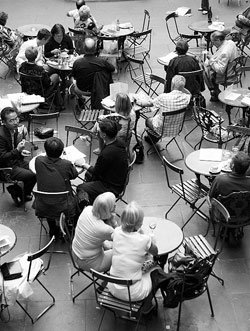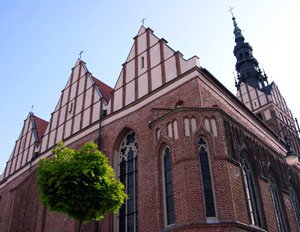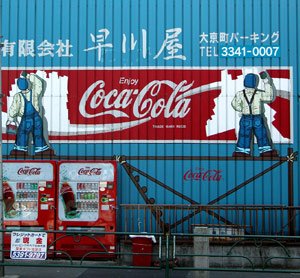As an amateur anthropologist, I want to write about what I have observed about Coca-Cola, Starbucks and some local churches. But before I go further, I want to make it clear that I am not advertizing Coca-Cola and Starbucks products, but am simply making a few comments about these beverages and their outlets. Also, I am not offering a business analysis, because I am not an economist but simply a consumer who enjoys Coke and Starbucks!
Of course, I am a follower of Jesus Christ, and I was a pastor for 25 years. In recent years, I have became a serious student of human migration and the scattering (i.e. diaspora) of nations and its implications for global missions and the global Church of Jesus Christ — this new academic discipline is called “diaspora missiology.”
Coca-Cola
I was a young boy when I started drinking Coca-Cola. Believe me, even in our secluded, small town in the Philippines, where I was born and raised, there were stores selling Coca-Cola products. So, for years Coca-Cola beverages was part of my regular diet until my medical doctors declared that I was diabetic! I stopped drinking coke about six years ago in obedience to my doctors! However, I am still a great fan of Coca-Cola products. I collect Coca-Cola cans and bottles; I just got a can from Iceland. You should come to my house (basement) and I will show you all kinds of bottles and cans from all over the world — some with Hebrew, Arabic, Chinese and Japanese inscriptions! I used to display my collections in my church office — trying to draw the attention of my parishioners who would peek into my study. One day, a deacon asked: “Pastor, why do you collect all these Coke cans and bottles?” My answer was: “I like Coca-Cola’s vision for the world!” [And] “What is their vision, Pastor?” he inquired. I pointed to an article that I had framed and hung on the wall beside an article from Canada’s leading newspaper, The Globe and Mail. Moving closer to the wall, he exclaimed: “Really!” “Wow!” He read out loud: “Coca-Cola wants every human being [6 Billion] to drink a bottle [beverage] in their life time.” He left the room shaking his head saying: “They conquered the world with bottles not bullets!” I yelled: “Yes and No, their product got there before missionaries arrived and they have stores before churches even existed!”
It has been said that even in Antarctica the scientists who are stationed there drink [imported] Coke! I know that on every cruise ship they have Coke. My son and I drove to the Canadian Arctic circle and there we had caribou steak and Coke! Coca-Cola products are all over the world.

Starbucks
Currently, I live in “the most multi-cultural city of the world” — TORONTO. In our neighbourhood, there are five Starbucks outlets. Our community demographics suggest that we are mostly young families, yuppies, condo-dwellers and caffeine addicts. It is a diverse community — gender, social, economic, educational, racial, cultural, and language diversity is displayed by way the people talk, their attire, cars, and of course their hair and skin-colors. The world has come to my condo doorsteps – I no longer live in a so called “global village” but in a “global neighbourhood.”
Now, I have to make a confession. Every day I go to my favourite Starbucks. That place, I observed, has become a “temple of secularism and consumerism.” I have limited space to unpack what I mean. But at Starbucks, people arrive as early as 0600 hours and continue to come until closing at 2300 hours. The door of this “temple” is open for long hours. Their music and songs are classics and jazz! They offer a variety of hot and cold drinks; squares and cakes too! The workers are polite, welcoming and cordial. People from all walks of life come to this place to talk, study, read their books, or like me, just to drink a “venti” cup of fresh brewed coffee with “half-half” in it while observing people for a couple of hours. Of course, I have my Blackberry with me all the time so I am really there to work! That has become my office — with Internet connections. So, Starbucks is a place to relax, think, work, network, eat, drink and be merry, etc. But let me tell you: Starbucks is more than a café latté or cappuccino, it is also a culture and a place to belong!
Local Church[es]

Forgive me ahead of time because I have some harsh words and despairing observations to write about some of the local churches in my neighbourhood. First, there is this church building that I can’t avoid on my way to Starbucks. This huge building is always closed! The only time it is open is when the congregation meets for “Wednesday Prayer Meeting 7-8 P.M.” and “Sunday School 9-10:30; Worship Service 11:00.” There is another church building a block away with a huge sign on their lawn and parking lot: “No Trespassing” and “RESERVE PARKING 24 Hours for Senior Pastor Only.” Speaking about closed doors and hospitable congregations? We have two of them right here! Still another church building that is not too far from the first two already mentioned is about 100 years old. I drove by one Sunday morning and saw very few people; there were more pigeons on the roof than people in the gathered congregation. This local church has become a mere monument and has totally become irrelevant. Every time I see these buildings, my blood pressure goes up and I lament! I am very sure that my high blood pressure does not come from Starbucks.
So, What Is the Point?
If I ever pastor a local church again I would intentionally start as many church-sites; more than the Starbucks outlets in our neighbourhood.
I would open the church doors long hours for community use and not for only for the Sunday elites.
I would model hospitality. By God’s grace and in the power of the Holy Spirit, I would embrace all people — yellow, black, and white; poor, rich, the not so rich and not so poor; the educated and less educated; the young and old; local born and foreign born; and yes folks with disabilities could take my parking spot any time!
I would preach the whole Gospel, and would lead my congregation to help reach the whole World — together we would offer THE LIVING WATER. Free of charge!
I would strive to be a pastor who would inspire the congregation to be GLOCAL i.e. doing Kingdom work globally and locally simultaneously.
Does the Lausanne Movement have a bigger vision than Coca-Cola? Is Cape Town 2010 going to help local churches become more relevant in their respective context (e.g. local churches in my pluralistic, secular, neo-pagan, and multicultural community)? Let us pray for the leaders of the Lausanne Movement, especially for those tasked to assemble the programme and direct the Cape Town Congress. May they discern the “voice” of God during their times of planning and deliberations.
Sadiri Joy Tira (D.Min., D.Miss) is the Senior Associate for Diasporas of the Lausanne Committee for World Evangelization; the Diasporas Specialist of the Chirstian and Missionary Alliance in Canada; and the International Coordinator for the Filipino International Network.

